Amazing abandoned American places then and now
Sites with stories to tell
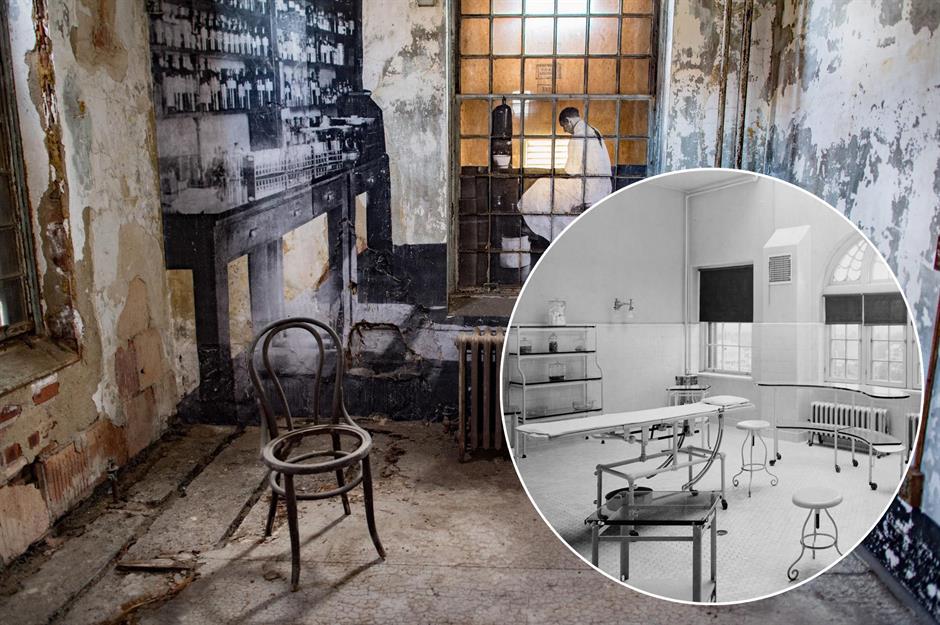
From ghost towns and forgotten hospitals to derelict mines and disused subway stations, America is filled with abandoned places that offer a glimpse into its layered past. But what did these sites look like in their prime?
Click through this gallery to discover abandoned American places then and now...
Then: Calico, California (1882)
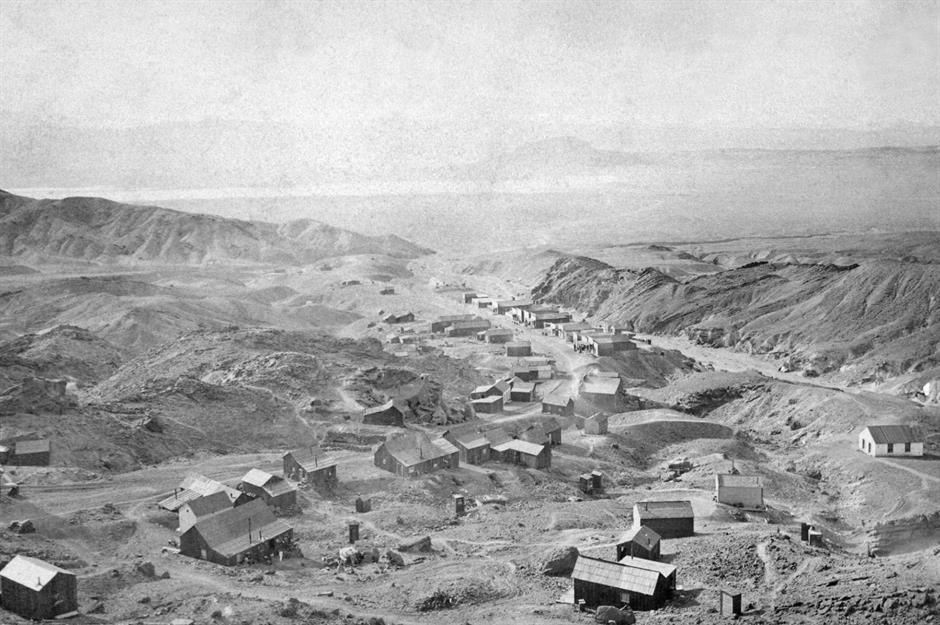
Named after the array of colors seen in the surrounding mountains, Calico was established in 1881. The mining outpost, located in the Mojave Desert, quickly earned a reputation as one of the biggest silver hotspots in the West, attracting 3,500 residents in its heyday. Shown here in 1882, the town had hotels, restaurants, a post office, schoolhouse, doctor’s surgery, and even its own telephone service.
Now: Calico, California

Like many mining towns, Calico declined when silver prices collapsed in the 1890s, and mining ended in 1907. Now partially restored to evoke its silver rush-era heyday, a handful of original buildings remain – including the former home of prominent resident Lucy Lane, now a museum.
Named a California Historical Landmark in 1962, Calico was also designated the Official State Silver Rush Ghost Town in 2005. Today, it welcomes tourists with mine tours, stunt shows, shops, a narrow-gauge railway, and seasonal events.
Then: Quincy Mine, Hancock, Michigan (1900)
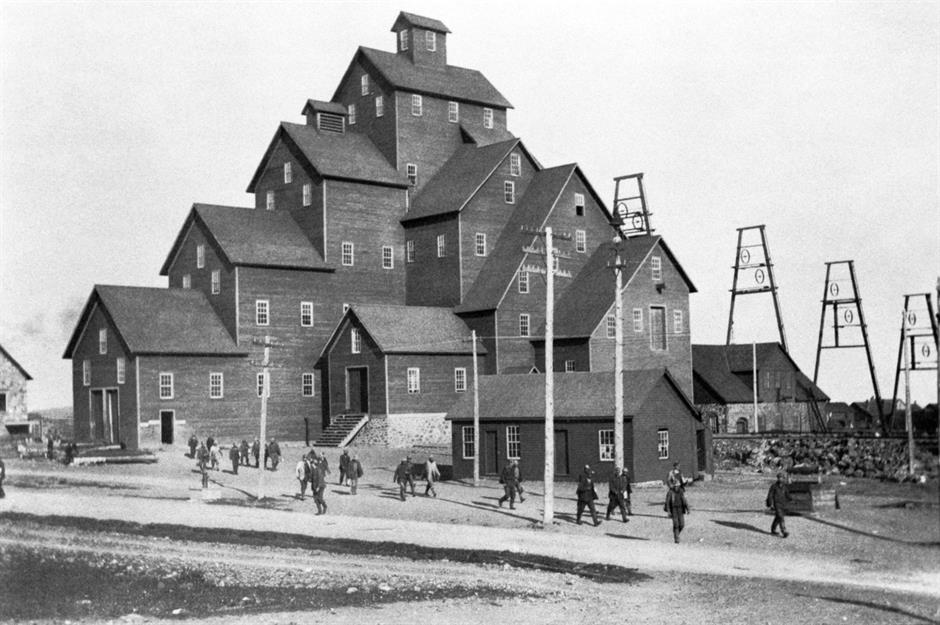
America’s first mineral mining boom began in the early 1840s with the discovery of silver, copper, and iron in Michigan’s Upper Peninsula. One of the region’s best-known mines was Quincy Mine, which provided a reliable stream of copper for almost 100 years, earning it the nickname 'Old Reliable'.
Now: Quincy Mine, Hancock, Michigan

But all good things come to an end, and in 1945 the Michigan mine ceased operations. Today, it’s protected by the Quincy Mine Hoist Association, which runs guided tours for visitors, including underground explorations of the mine itself, and access to the working cog rail tram.
Love this? Follow us on Facebook for more abandoned and historical places...
Then: West Virginia Penitentiary, Moundsville, West Virginia (1900)

Modeled after Old Joliet Prison, complete with Gothic turrets and battlements, the West Virginia Penitentiary opened in 1876. Inside, conditions varied: inmates who misbehaved were confined to a tiny cell block known as 'The Alamo', where they could be held for 24 hours a day. In contrast, well-behaved prisoners could earn a place in the more relaxed, low-security Honor Hall.
Now: West Virginia Penitentiary, Moundsville, West Virginia
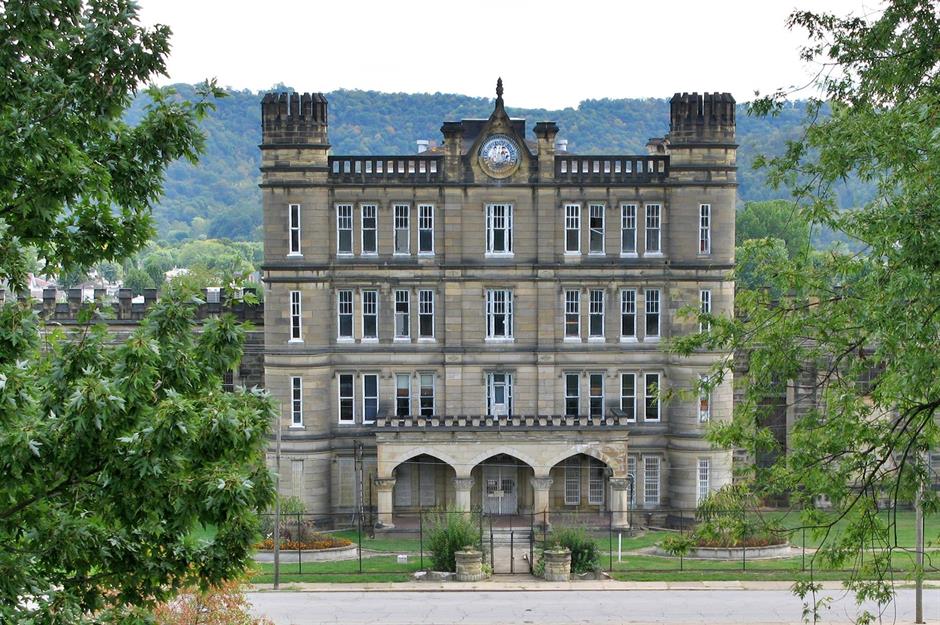
The prison was the site of 94 executions, with public hangings held until 1931, after which they were carried out privately. In 1951, the state switched to electrocution until the final execution in 1959.
The prison officially closed in 1995 and has since gained a reputation for being haunted – visitors have reported ghost sightings, disembodied voices, and an eerie sense of being watched. Today, the site offers a range of guided tours for those keen to explore its dark history.
Then: City Hall subway station, New York City, New York (1904)
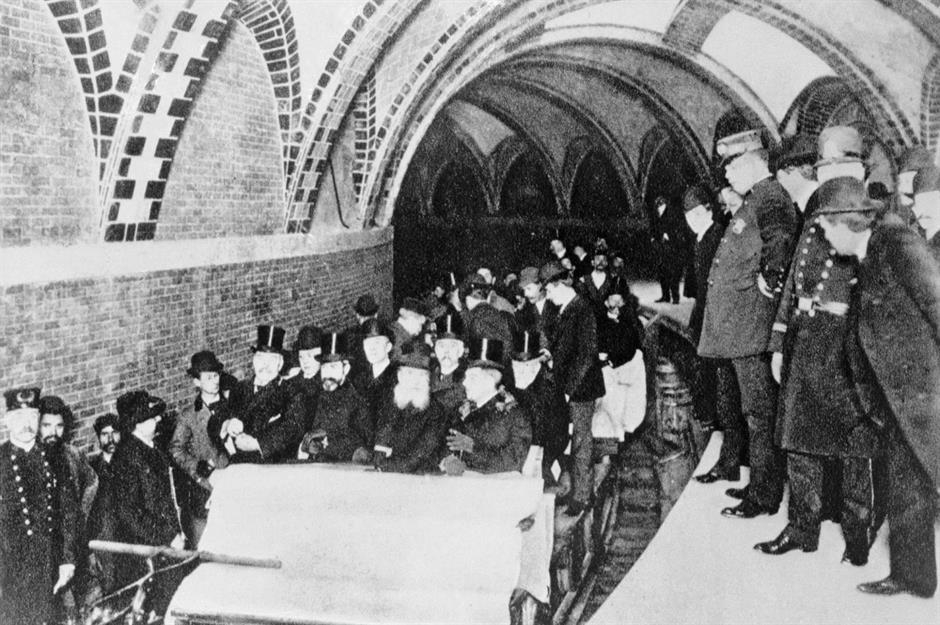
Pictured here on opening day, October 27, 1904, eager passengers board the subway for the first time at City Hall station. As well as being one of the first stops on the network, it was considered the grandest, complete with chandeliers, glass skylights, and ornately tiled arches created by famed engineer Rafael Guastavino.
Now: City Hall subway station, New York City, New York

But it was the architectural features which made City Hall subway station so stunning that were also responsible for its downfall. When the design of subway cars changed in later decades, the station’s curved ceilings weren’t able to accommodate their shape, and in 1945 it was forced to close. Today, passengers can’t use the stop but they can travel through it, if they stay on board the 6 train after Brooklyn Bridge.
Then: Sloss Furnaces, Birmingham, Alabama (1906)
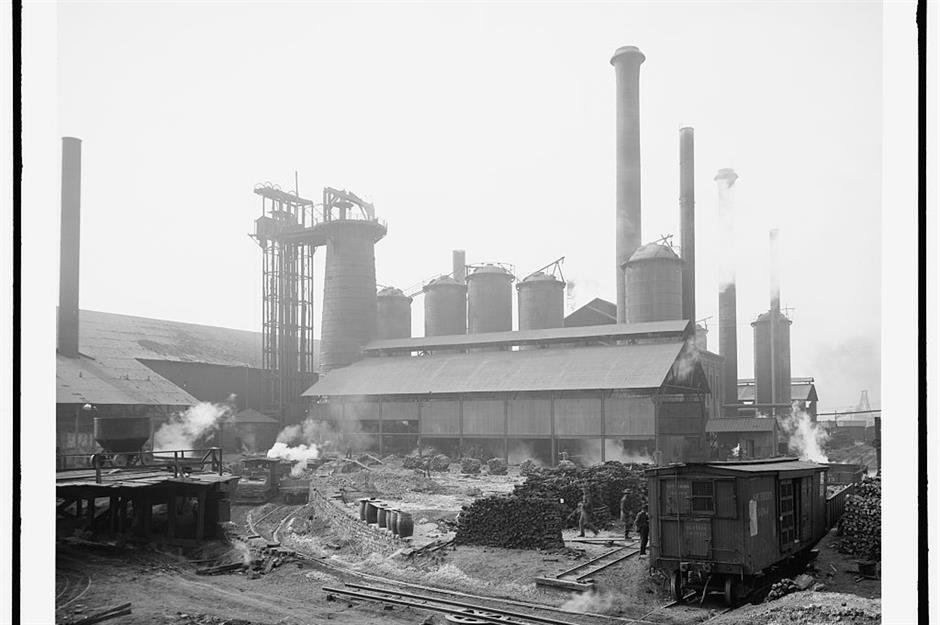
Built during the 1880s by railroad magnate Colonel James Sloss, Birmingham’s Sloss Furnaces was created at the peak of America’s industrial era. It quickly grew to become one of the world’s largest producers of pig iron by the beginning of World War I.
But the workforce at Sloss was extremely segregated, with all managerial roles being held by white people and African-Americans providing all the hard labor.
Now: Sloss Furnaces, Birmingham, Alabama

Sloss Furnaces was largely rebuilt in the early 20th century – the oldest structure still standing dates to 1902. Then, in the 1960s, new environmental regulations under the US Clean Air Act forced outdated industrial sites to shut down.
Operations ceased in 1971, but thanks to determined local preservationists, the site was saved from demolition. Now a National Historic Landmark, Sloss stands as a powerful reminder of America’s industrial age.
Then: Ellis Island Immigrant Hospital, Jersey City, New Jersey (1909)

More than 12 million immigrants passed through Ellis Island between 1892 and 1954. While many are familiar with the Great Hall, where new arrivals were processed, fewer know that the island also housed one of America’s earliest public health hospitals.
After disembarking, immigrants considered a public health risk were denied entry, while others who needed care were sent to the Ellis Island Immigrant Hospital. At its peak in 1914, the hospital treated more than 10,000 patients.
Now: Ellis Island Immigrant Hospital, Jersey City, New Jersey

The Ellis Island Immigrant Hospital closed in 1930, following a sharp drop in immigration due to new restrictions. Over the next two decades, the site saw new life as an FBI field office, a wartime hospital for soldiers with shell shock, and a Coast Guard training base.
But by 1954, the island was fully abandoned. Today, visitors can explore the hospital's eerie, unrestored wards on a 90-minute guided tour run by the Save Ellis Island organization.
Then: Bannerman Castle, Pollepel Island, New York (1917)
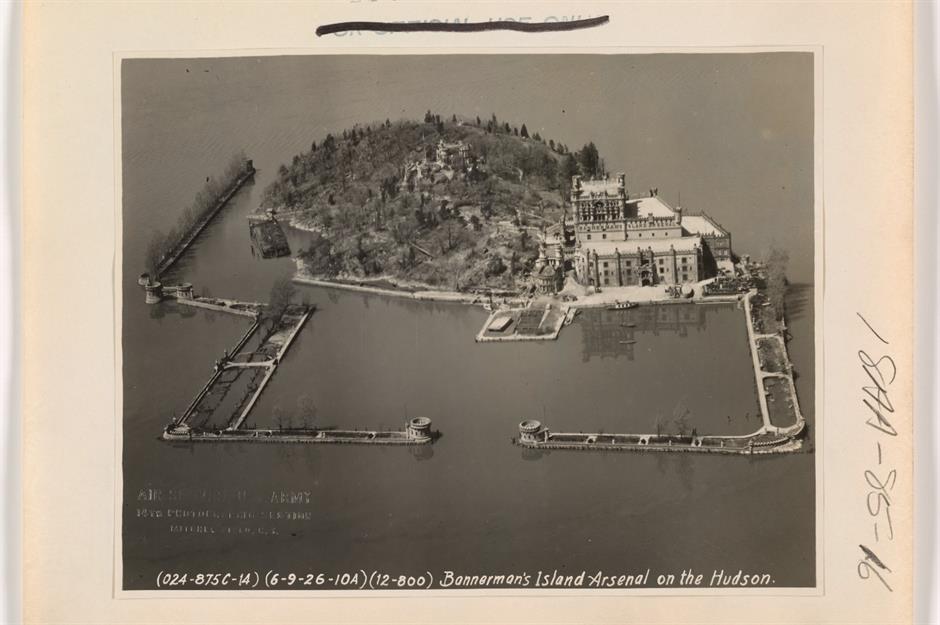
Sitting on Pollepel Island in the Hudson River, Bannerman Castle was built by Scotsman Francis Bannerman in 1901 as a place to store army equipment and weapons. Along with his family, Bannerman established a thriving business in military supplies: in fact, half of all commemorative cannons in the US are said to have been purchased from them.
Now: Bannerman Castle, Pollepel Island, New York

A gunpowder explosion in 1920 severely damaged the castle on Pollepel Island, and the site's decline continued when the ferry connecting the island to the mainland sank in 1950.
By 1957 the island was abandoned, leading to years of neglect, vandalism, and decay. In 1967, New York State purchased the property, and in the early 1990s, the Bannerman Castle Trust was established to preserve the site. Since 2004, guided tours have been available.
Then: Bannack, Montana (1920)
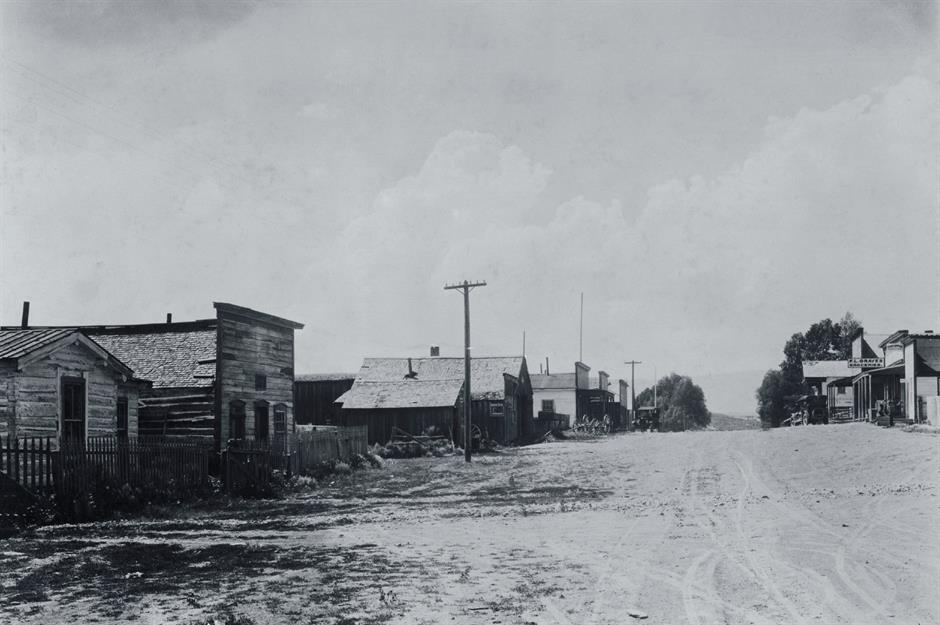
Gold was discovered in Bannack, Montana, in July 1862 by prospector John White, sparking a rush that brought around 3,000 fortune seekers to the area by the spring of 1863.
But the boom was short-lived. When a richer strike was made at Alder Gulch in 1863, many miners packed up and moved on. By 1870, Bannack’s population had dwindled to just a few hundred, and the town’s brief prosperity had already faded.
Now: Bannack, Montana
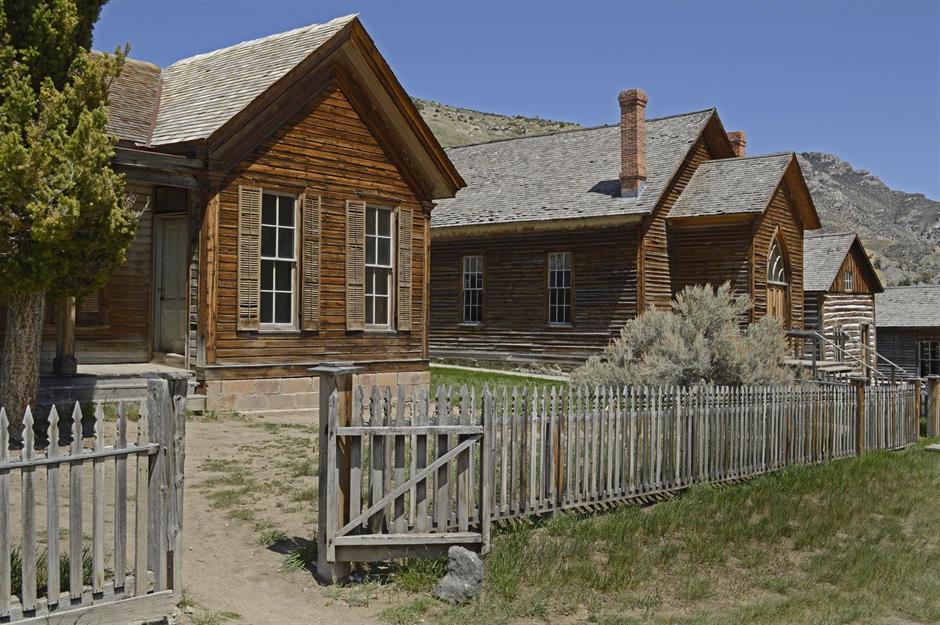
By the 1940s, Bannack had become a ghost town, and it might have been lost to decay and vandalism if it hadn’t been protected as a State Park in 1954.
Today, with more than 50 remarkably intact buildings – including wooden homes, mining relics, and public structures – Bannack stands as one of the most compelling and atmospheric Gold Rush towns in the American West.
Then: Shakespeare, New Mexico (c.1930s)

The town of Shakespeare began life as a stagecoach stop, Mexican Springs, in the 1850s. Renamed Ralston City in 1870 after a silver strike and financier William Ralston, its name later became tainted by Ralston’s link to the Diamond Hoax of 1872. In 1879, new owner Colonel William G. Boyle rebranded it Shakespeare, aiming to shed the town’s scandalous past and revive its fortunes.
Now: Shakespeare, New Mexico
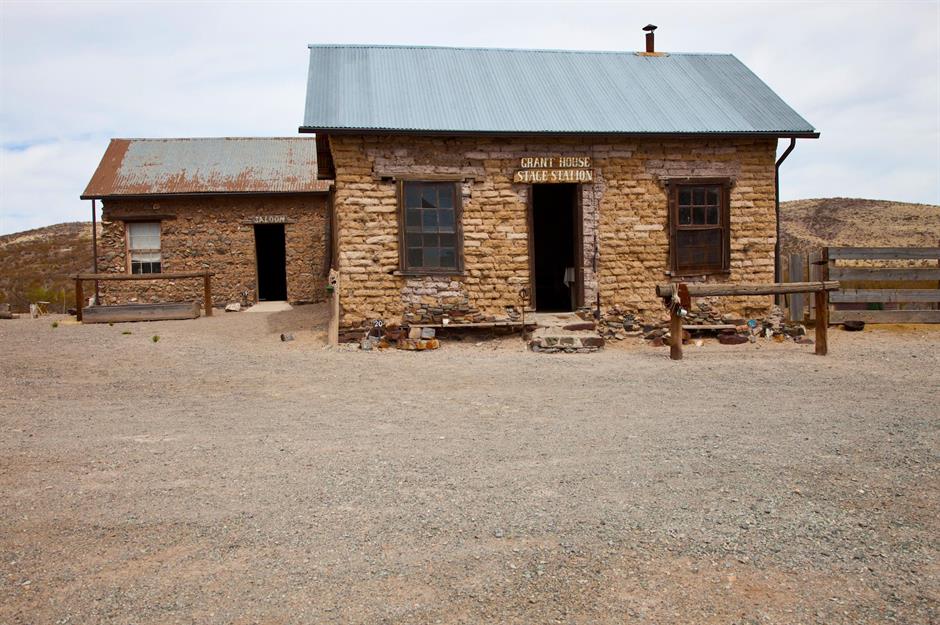
Shakespeare never returned to the relative prosperity of its early 1870s boom, when up to 3,000 people lived there. Following the economic crash of 1893, the mines closed and most residents moved on. Today, the town is recognized as a National Historic Site, and visitors can explore it on scheduled guided tours.
Then: Old Joliet Prison, Joliet, Illinois (1931)
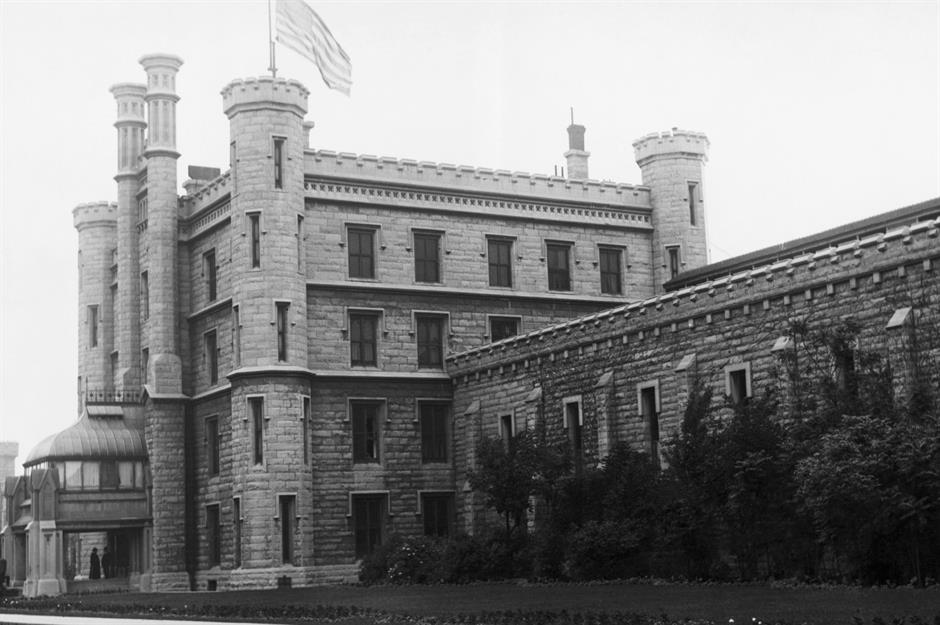
Recognize this spooky-looking former prison? That’s because it’s had on-screen appearances in movies and TV series such as The Blues Brothers and Prison Break. Built in the 1850s, it’s an enormous facility, with 24 buildings and 25-foot-tall walls.
Conditions were cramped and unsanitary – it didn’t even have running water or toilets in cells until 1910 – and it was the site of numerous hangings and executions.
Now: Old Joliet Prison, Joliet, Illinois
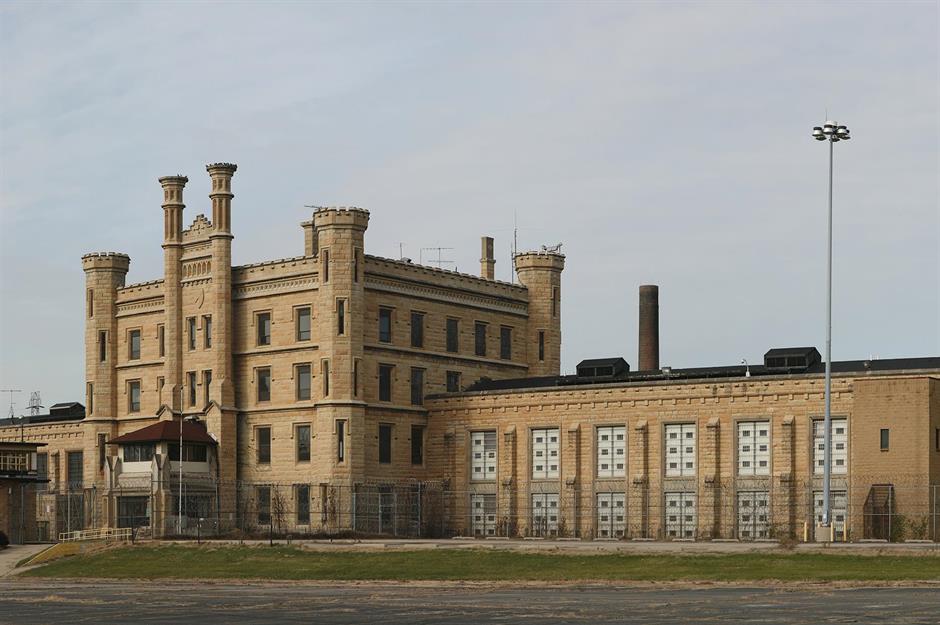
When Stateville Correctional Center opened nearby in 1925, Old Joliet Prison was expected to shut down – but it remained in use until 2002. Though some areas have suffered damage over the years, many of the prison’s buildings are still intact. Since 2018, visitors have been able to explore the site on guided walking tours run by the Joliet Area Historical Museum.
Then: Eastern State Penitentiary, Philadelphia, Pennsylvania (1934)
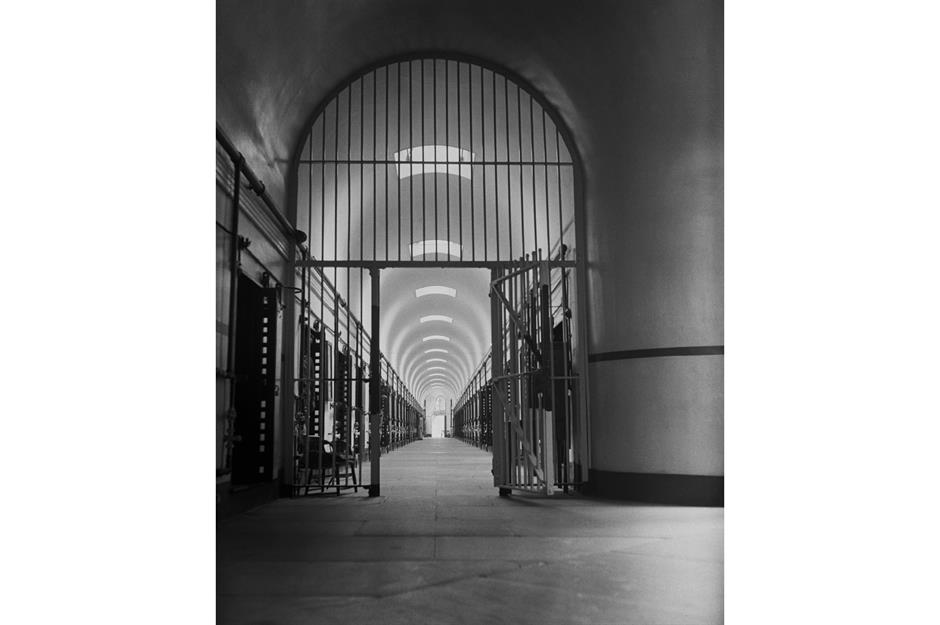
Opened in 1829, Eastern State Penitentiary was the most expensive prison ever built at the time, and the first to coin the term ‘penitentiary’. Its design was rooted in Quaker ideals, aiming to inspire genuine remorse through solitude and reflection.
But despite its reformist intentions, this was still a prison in every sense – its strict system of isolation kept inmates completely separated, often confined alone in silence for years at a time.
Now: Eastern State Penitentiary, Philadelphia, Pennsylvania
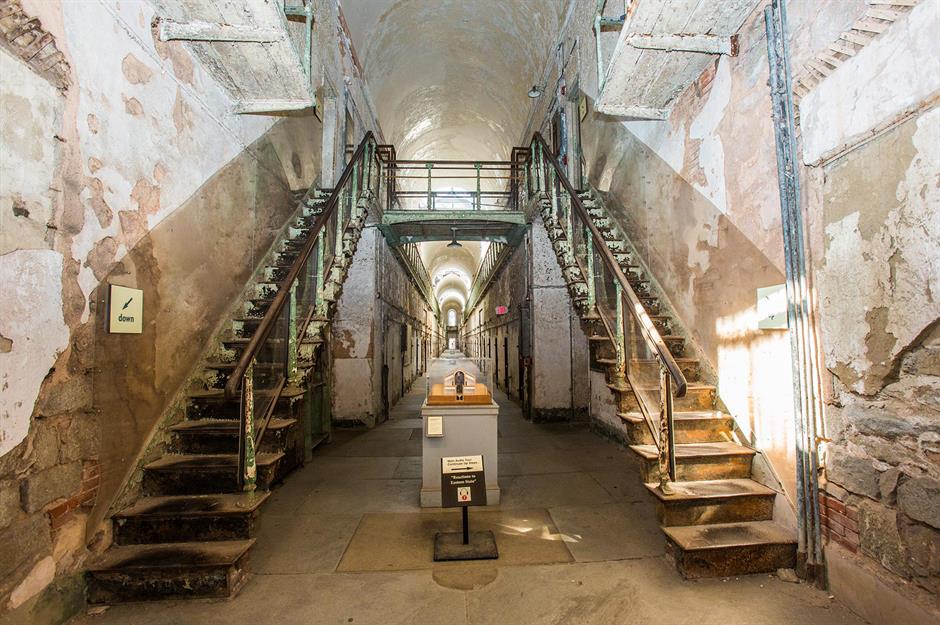
The Quakers believed that solitary confinement – where prisoners ate, slept, and exercised alone, with the Bible as their sole permitted reading material – would lead to deep reflection and repentance for their crimes.
However, these conditions proved to be unbearable for many inmates. The penitentiary closed in 1971 after 142 years of operation and reopened as a museum in 1994, allowing visitors to explore its haunting corridors and tiny, isolating cells.
Then: Bodie, California (1934)

Located at the end of a dusty, 13-mile road off State Highway 395, Bodie was once among California’s most prominent Gold Rush towns. Gold was first discovered nearby in 1859, but it wasn’t until 1876, when the Standard Company struck a rich vein, that the town truly boomed.
By 1879, Bodie had grown into a bustling community of up to 10,000 residents. Pictured here is its schoolhouse in 1934.
Now: Bodie, California
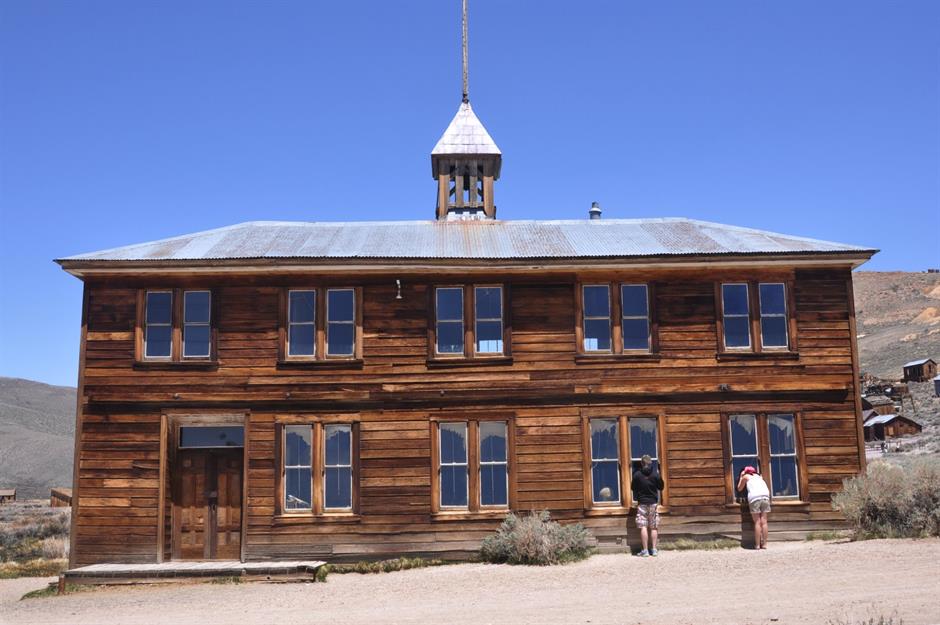
Unfortunately, Bodie’s decline was nearly as swift as its rise. Though major investment poured in during the late 1870s and thousands arrived chasing gold, the rich veins soon began to run dry.
Mining operations limped on into the 20th century but finally ceased in 1942, when wartime regulations shut down non-essential gold production. In 1962, Bodie was preserved as a State Historic Park, and its weathered remains are now frozen in time.
Then: Kennecott, McCarthy, Alaska (1964)
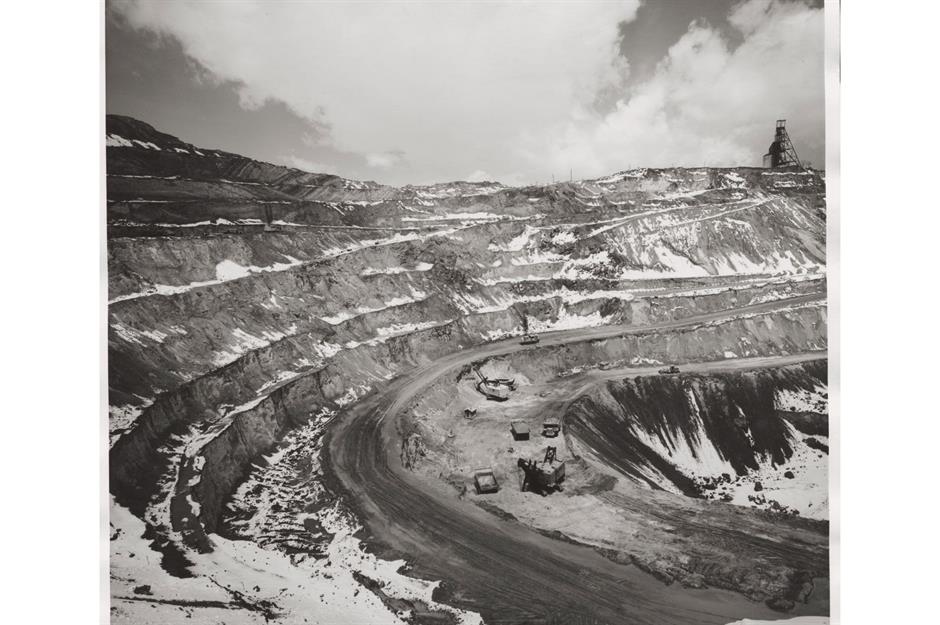
The town of Kennecott, also known as Kennicott, was established following the discovery of rich copper deposits in the early 1900s near the Kennicott Glacier in Alaska. But by the 1920s, the high-grade copper ore began to diminish, and the Kennecott mines ceased operations in 1938 after extracting over 4.5 million tons of ore.
Now: Kennecott, McCarthy, Alaska
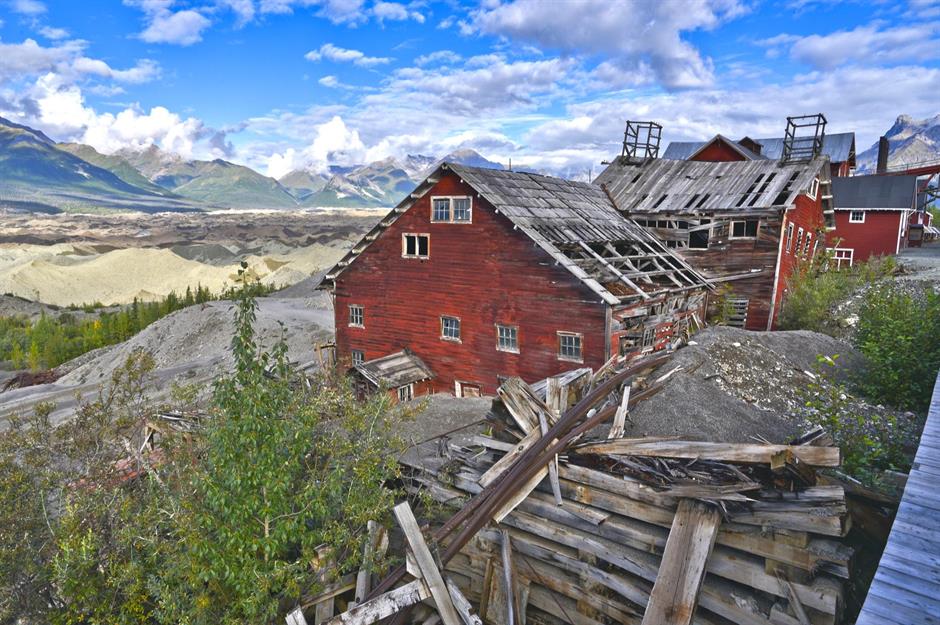
The town was abandoned the same year when the Copper River and Northwestern Railway ceased operations. Today, many of the buildings remain in varying states of disrepair, though several are now protected as part of a National Historic Landmark, recognizing the site’s importance in early 20th-century copper mining.
Comments
Do you want to comment on this article? You need to be signed in for this feature